Inside the Somali Political Movement
The new generation of Somali Americans are active, energetic, and ready to be represented; they are hungry for opportunity and are willing to fight for a place in the American melting pot. Divided between the old ideas of the past and the new ideals of the present, the Somali community is ready to use the political process to make a mark for themselves in Minnesota: the place they now call home.
May 31, 2014
Waiting in the lobby of the Minneapolis City Hall, I watched as active constituents walked by to meet with their council members––quite a busy afternoon for a Thursday. I wasn’t there to meet with my council member, but instead, to meet with a young woman named Ilhan Omar, the DFL Vice Chair in District 60, and senior policy aide to Minneapolis City Council Member Andrew Johnson (Ward 12).
Originally hesitant to meet for an interview after having been involved in a dispute at the local DFL caucus a few weeks prior, she kindly agreed to meet with me to discuss her life and love of politics. And when Omar crossed the lobby bearing a huge smile and traditional hijab saying, “Hello! You must be Parker––I am so excited to meet you in person,” I knew that I had found an invaluable asset for learning about the Somali Political Movement.
After joking about whether we were Political Science majors or undercover reporters from the Star Tribune, I explained, much to her surprise, that my videographer and I were actually here for our school newspaper and that we wanted to ask her about her role in politics, and how the Somali community was organizing to make their political mark.
Background
When Civil War broke out in Somalia in the early 90s, much of the world watched in horror as one of the biggest humanitarian crisis unfolded before their eyes. With millions displaced, a lack of basic necessities, and diseases spreading rapidly, many wondered how something this devastating could happen so quickly.
In the aftermath, 400,000 people were displaced within their own country, and 300,000 more were displaced in neighboring countries and around the world. One such place that they sought refuge was in the United States––specifically Minnesota.
Many wonder why Minneapolis, Minnesota, one of the coldest places in the continental United States, would become home to over 30,000 individuals from Africa, but the answer is simple, Minnesota lives up to our “Minnesota Nice” standard. Churches and other social welfare services have played a significant role in allowing a war-stricken people to find safe refuge, by assisting in the complicated and red-tape filled process of resettlement.
Groups like Lutheran Social Services, Catholic Charities, and World Relief Minnesota are extremely active in their aid to refugees from around the world and helped to create a new place to call home. “The reason we came to Minnesota is not because of the weather,” Haji-Husein said, “but instead because the resources in the state make it possible.”
Unfortunately, many of the same organizations that helped the Somali community to resettle here are taking funding away from organizations like the Somali Benadiri Community of Minnesota, that are devoted to helping the community to prosper while living in the state. “Funding is very competitive, because the same organizations that are helping Somalis come over are competing for the funding we need to help them once they are here. And because they are a larger more well known organization, they will get the funding,” Haji-Husein said.
As the first Somali to come to Minnesota as a refugee of the war, Haji-Husein, who was a professor at the Somali National University in Mogadishu, became an integral part of the resettlement process. “I came first because of my background as an educator, as well as my ability to speak English well,” Haji-Husein said, “and many more followed.”
Haji-Husein felt it was his duty to make the extremely tedious process of resettlement easier for the Somali refugees seeking a new home in Minnesota, and as a result, began the Somali Benadiri Community of Minnesota. “I established the organization because it takes much longer than just a month to complete a resettlement,” Haji Husein said, “housing, jobs, education, healthcare, forms of identification, and welfare are all complicated and necessary elements of resettlement that isn’t explained in a brochure, which is why the organization exists––we are a bridge between Somalia and Minnesota.”
After the initial flood of immigrants, families followed and relocated from other states and countries, making Minnesota the largest Somali community outside of Somalia. Sadly, Somalia continues to be a country in the middle of a political crisis, meaning that somewhere around 50 Somali refugees are immigrating to Minnesota every month.
Immigration
Like many members of the Minnesota Somali community, Omar was born in Somalia, her home country, before the start of the Civil War in 1991. After the Civil War broke out, Omar and her family moved to refugee camps in Kenya in order to escape the violence, which became a sort of safe haven for her and her family. “The refugee camps became normal to me,” Omar said. “I didn’t even want to leave––it became normal and fun for me to be with all of my family. I didn’t want to be torn apart again.”
After some time, Omar’s family was able to secure the means to move to the United States thanks to the help of relief organizations and arrived in the state of Virginia. “Moving from the refugee camp to Virginia was difficult because of the isolation, but moving to Minnesota, because of all of the relatives I knew here, was a lot easier––it felt a lot more at home,” Omar said.
Her time in the refugee camps greatly impacted her life and subsequent choices; Omar credits these key developmental periods in her life as major influences in her career path. “I think that politics is all about making your voice heard, and trying to change things that you don’t like in society,” Omar said. “In this way, I think that my narrative has played a role in my choosing of the career that I am currently involved in.”
Omar’s story is reminiscent of many others in the Somali community. Mr. Haji-Husein, Omar’s uncle, posses a similar drive thanks to his experiences, and has made it his goal to make more stories like his and Omar’s possible through the creation of the Somali Benadiri Community of Minnesota, an organization dedicated to help aid other Somali refugees. “We work with Somali families and local organizations and government in order to try and make the complicated transition process a little bit easier,” Haji-Husein said.
One of the reasons that the organization is successful in their mission is in part due to their open door policy; the organization is a place where all Somalis can come and receive help while also being a recognizable place for all. “It is our goal to help make this difficult process a little bit easier, and we like to be there with them all the way through the process,” Haji-Husein said.
As more Somalis have found refuge in Minnesota––especially the Twin Cities metropolis––key issues have begun to surface that need to be addressed. “Like any community we have problems that need to be dealt with, which is why political representation is so vital to making one’s mark––it is the defining characteristic of whether or not an immigrant community will be able to carve out their own space in a new country,” Omar said.
Language Barrier
Ilhan Omar, DFL Vice Chair in District 60, and senior policy aide to Minneapolis City Council Member Andrew Johnson (Ward 12), came to the United States as a child, and learned English within three months.
In order to make a life in a new world, communication is a necessity. Moving from East Africa, the majority of Somali refugees speak their native language, Somali, making learning the English language in Minnesota an abrupt and important part of the immigration process. “Easily the hardest part of adjusting to a new life in Minnesota is the language barrier that exists, which often means that these students will end up below grade level in other subjects, and make their formative schooling years that much more challenging,” Jocelyn Pickreign, Assistant with the Somali Parent Association, said.
Some, like Omar, are able to overcome this barrier in a miraculously short amount of time. “Within three months of moving to the United States I was able to communicate effectively with Americans, and close to six months after arriving, I became proficient in the language,” Omar said.
When Omar first moved to Virginia in the 90s, she had a very limited knowledge of what she should expect from her new home. “I only knew two English words: ‘Shut Up’ and ‘Hello,’ which wasn’t a very good combination. In my high school yearbook my teacher wrote, ‘Shut up – Ilhan,’ and then four years later, ‘Hi I’m Ilhan, and I want to be president of the United States!’” Omar said.
As a child, Omar was expected to attend school after settling in and attended the local public school in her area, where there was only one other Somali student. “It was lonely in Virginia––I had no friends or family there,” Omar said. “The other Somali girl didn’t speak Somali because her family had come over before the war, so it was just my sister and I.”
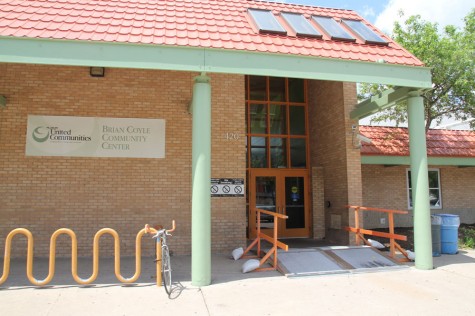
This lack of understanding proved difficult for Omar. “Somalis are a very vocal and vibrant people who like to talk with their hands,” Omar said. “Which was sometimes interpreted as aggressive by the administration at the school. Needless to say I ended up in the principal’s office a few times, simply because people couldn’t understand what I was saying.”
In spite of the obvious challenge, Omar was able to fight against her obvious setbacks to try and adjust to her new environment. “It was extremely difficult for the first year or so. My sister and I would come home crying every single night, and our father would simply tell us that we needed to learn English and to learn the new culture in order for it to get better––he was right,” Omar said.
Omar’s father proved influential in Omar’s decision to work at learning English. “I really took what he said to heart and decided that I could be miserable, or I could start to try and learn,” Omar said. “My sister and I would watch American TV with the subtitles on, and then pause and look up words in the dictionary; we would try and construct phrases in English that we could say and then tell them to our father (who was fluent)––we weren’t very good.”
Unfortunately, this impressive example is not nearly as replicable with the entire Somali community. “I know that my situation is not like the majority. It’s hard to learn a new language––the majority of American students will never become close to proficient in whatever foreign language they study––but I think that it’s an integral aspect of becoming part of a new culture, and an important step that’s accelerated by necessity,” Omar said.
In keeping with this same idea, Parent Advocate Omar Ali sees the transition similarly. “The first two or three months is very difficult, but we succeed,” Ali said. “In this country, the key is education. Without an education, you cannot challenge people for a job.”
For the majority of Somali Americans, education is seen as the vital link between work and success. However, sometimes accessing an equal education to their American counterparts can be a challenge. “The language barrier is the biggest issue,” Pickreign said. “Somali students have the same struggles––a lot of the same things are confusing––they just have the language barrier to combat on top of it.”
Beyond the inherent difficulties with education for any immigrant community, there exists systematic barriers to accessing an equal opportunity for the Somali community specifically. “Housing, education, discrimination, and representation all remain key issues that we as a community still need to tackle,” Ali said.
All of these issues will take time to tackle––something not easy to deal with when such vital services are in play. “The challenge is that you will not be able to immediately get all that you want,” Haji-Husein said, “which is something that is hard for a family coming here for the first time to understand.”
True progress has been made despite the hurdles to overcome, which has contributed to a mindset shift within the community as a whole. “Now our community is in a satisfactory state, which means that it is now time for mutual support––for us to help our fellow brothers to be more successful,” Haji-Husein said.
Education
The Somali Parent Association is an organization devoted to helping close the education gap among Somali and East African students.
ELL, or English Language Learners, is a popular model for learning English in the United States for foreign born or non native speakers. Much of the Somali community works within the confines of this program in order to try adjust to the American education system. “We work a lot with ELL students in the Minneapolis system, working with the students, parents, and schools to bring these students back up to grade level,” Pickreign said.
The problem with these programs is in the implementation rather than the execution. “ELL classes can be both a blessing and a curse for Somali students,” Omar said, “because it’s great to be able to relate, but with more Somali students and teachers there is less English being spoken, and unfortunately more kids in ELL classes than there should be.”
“You have kids who are born here that are placed in ELL classes, and who spend their next seven years in ELL classes, which is a waste of potential from the student and resources from the district,” Omar said. “I was in a meeting once with State Senator Patricia Torres Ray who was saying this, and I was like finally this is how I feel!”
Omar knows both from first hand experience as a student as well as a parent. “I was living in North Dakota for a while with two of my children, and there it was much different than Minnesota because it was about whether the student spoke English and was from the US,” Omar said. “But when I moved back to Minnesota, I learned our state focused on where the parents were from and what language they spoke.”
“My children would come home and tell me that they had older kids in their classes and that they were stupid and couldn’t speak any English––they would tell me that they would have to help the teachers, and that they spoke better English than them,” Omar said. “It wasn’t until later that I realized they had been placed into an ELL class despite their native fluency with the language, and the lack of my approval––it made me so angry that they would take something so easy to them away and set them back like that simply because of who I was.”
This scenario is a common one in the Minneapolis Public School System because of the massive influx in foreign students over the past 20 years from many communities. “I had to sign a waiver in order to say that I didn’t want my child to be in an ELL class, and I did not even think to look for such a thing,” Omar said. “Imagine if you were a new immigrant, spoke little to no English, but were a concerned parent who wanted the best for your child––you would never know to look for this waiver that needs to be signed every single year.”
The “opt out” instead of “opt in” model currently in place hinders many students, like Omar’s children, who would be able to succeed if not systematically held back. “My daughter was a third grader reading at a sixth grade level, but yet they put her in an ELL class where she was supposed to learn colors,” Omar said.
Omar and others have received criticism for their lack of support for expansion to ELL classes, especially from within the Somali community. “People think that taking away ELL makes you a racist, but in fact, profiling these kids (and it doesn’t just happen to Somalis) is the racist part. Anyone without a parent from the states is thus classified as ELL, and now it’s up to the parents who don’t know to be looking for this waiver to sign it every single year. If you have multiple kids, they all have to do that too––it’s close to impossible,” Omar said.
The education gap between Somali and American students is still a wide one that is in need of fixing, but has been made a priority by many. “Our main goal is closing the education gap that currently exists,” Pickreign says. “We take a two-pronged approach to the issue: we work with Somali parents as well as educators in the community and provide training on both sides, so that teachers can work more effectively with teachers who may not understand everything linguistically or culturally in the Somali community. And then we work with parents to help them learn how to help their kids at home and how to support them.”
Clearly the problem exists thanks to multiple factors, but closing the gap is imperative for the Somali community. “We can and will succeed in America thanks to education. I know students who have gone from ELL to University––it is possible, and it will be the key to our success in America,” Haji-Husein said.
Community Concerns
Money is vital to any community––especially for a budding immigrant community in America–– in defining a new life in a new country through a steady source of income from a reliable employer. This vision is difficult to attain if coming from an entirely different country and culture, seeking to make a mark in a new community. “We need to get jobs right away, but sometimes it is hard to find work, and sometimes there are problems with the work there is,” Ali said.
Even applying for a job or searching for one is a hurdle to be crossed for new Somali immigrants. “One of the biggest problems with employment is that most companies want you to apply online, but a lot of the new immigrants are not able to do this because they don’t have access to the internet in their homes, or transportation to get to a library,” Haji-Husein said.
There are some Minnesota companies that have accommodated to the Somali community’s needs. “We have a relationship with Cub Foods where they know our organization and hire Somalis, we also have companies who support us and will work with us to help Somalis get jobs,” Ali said.
Somalis have unique challenges in seeking to assimilate into American culture in part due to cultural and religious traditions different from the majority of Americans. “It can be difficult sometimes to work with local companies that have problems with the hijab, or prayer time, which are both religious requirements,” Haji-Husein said. “It can be difficult for them to understand these aspects of our culture and how they are important to us.”
Misunderstanding doesn’t solely exist in the private sector, but also on the streets as well. “After 9/11, you would go to a bus stop and people would look at you and tease you, but 99 percent of Minnesotans are extremely nice and we want to thank them for all that they have done for us,” Ali said.
Similarly, there are misunderstandings and discrimination from the Minneapolis Police Force. ““Police enforcement is a big problem. When you call the police they will not come quickly; when they arrive they will have a negative attitude. I have had several incidents in my office, and the police have treated me badly. I have even contacted their superiors, but we come across the same issue,” Haji-Husein said. “We worry about the security.”
Profiling is also a major problem for the community. “Sometimes when you drive the car, the police just follow you because you have a hijab or look foreign and will find a reason to stop you and give you a ticket––it affects your record,” Ali said. “We just expect equal treatment like everyone else.”
In seeking to help remedy some of the major qualms within the community, the Minneapolis Police Force has taken steps to become more representative of the culture and background of the community they seek to protect. “There are now two Somali officers in Riverside, which helps immensely since they know our language and they know our culture––we can explain to them our issues,” Ali said. “We need to have greater representation in the police force for more justice.”
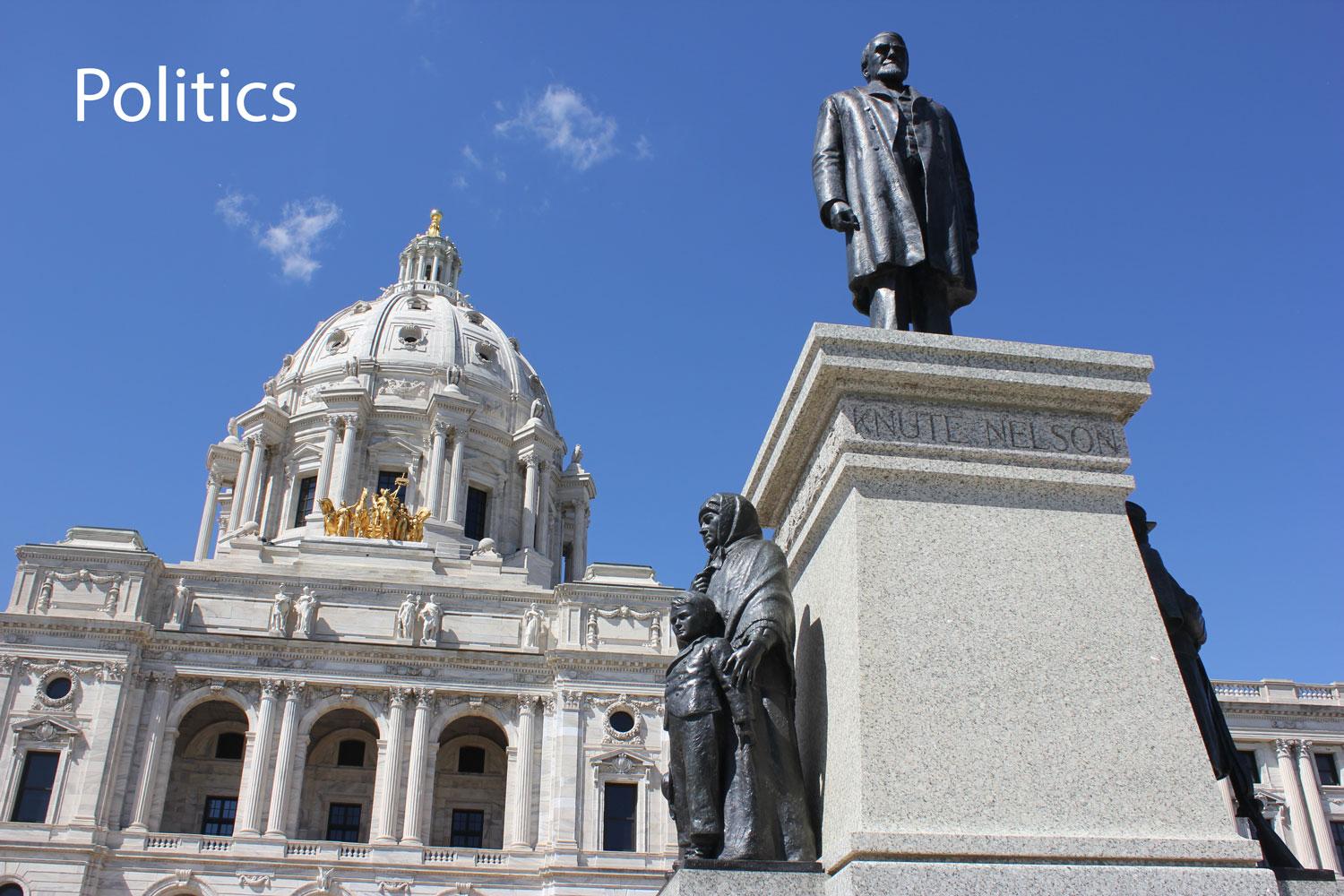
Local Politics isn’t just about the ideas and visions of the one person who is elected, and the Somali community is working to gain representation in Minnesota.
As the Somali community continues to grow in Minnesota, so too does their influence in Minnesota politics. In the last election cycle, Abdi Warsame, a former school board member in Minneapolis’ sixth ward decided to run for the highest office any Somali-American has ever held (Ahmed M. Hassan also ran for and won the city council seat in his hometown of Clarkston Georgia, making him equal to Council Member Warsame). “It really was a grassroots movement that we put together, with hundreds of volunteers working hard for the same goal––it was a well fought and successful campaign,” Council Member Warsame said.
Representing a Somali population for the first time brings about many challenges, but there is no doubt that some of the same energy used to get him elected will be transferred into the office he now holds. “As a council member, I will be focusing on the issues that are most important to Ward 6; these are basic issues like housing, employment, equal treatment (especially the police), among others, and I hope to be able to help make some of these changes during my time in office,” Warsame said. “I will fight for what I believe is right, even if there are other council members who disagree.”
In the grander picture of the Somali community in Minnesota, Council Member Warsame believes there are three options for where the Somali community will be able to go. “Isolation: where the community does not absorb into the local community. Assimilation: when a community is completely absorbed into the majority. And finally, integration: in which a community is both part of the greater community, while still maintaining their unique cultural attributes––this is what we as a Somali community need to be focusing on,” Warsame said.
The road to representation has not been an easy one to fight, either within the current confines or outside it, and many in the community feel that they are at a political crossroads. “There are some people in our community who I would call ‘gatekeepers’ or people who are trying to stop the progress we’ve made, and keep representation among a select few,” Omar said. “I don’t think that this is a healthy model––our community doesn’t thrive off of this sort of representation.”
This political rift took a drastic turn a few months ago at the DFL caucus for Cedar Riverside, a predominantly Somali community, when violence broke out ending in injuries to multiple people including Omar. “I think that there were a lot of people who were upset by some of the things I was saying, and were really just trying to enforce that gatekeeper like mentality,” Omar said. “We need to be open to these new ideas––other immigrant groups who’ve maintained this gatekeeper mentality have not prospered nor found their political voice.”
Prior to the last election cycle, the seeds for the Somali political movement had been sewn. Omar and a few others decided to form a PAC (Political Action Committee), called the New Americans PAC, “to engage, educate, inform, and effectively organize the Minnesota East Africans participation in the state and local political process, and in the belief that such participation empowers our communities and strengthens our future,” according to their Facebook page.
The PAC was extremely successful in the last election, winning all of their contested elections. “In the last cycle we contested six school board elections around Minneapolis and were able to win all six of them,” Omar said.
One of the original members of the PAC is Mohamud Noor, Board of Education Director for District 3 in Minneapolis, who is running for State Senate seat 60B against incumbent Senator Phyllis Kahn. “I am excited to be running for State Senator to represent the issues important to not only the Somali community, but also the entire district,” Noor said.
Noor is implementing many of the same techniques used by Council Member Warsame to run his campaign. “Our focus is on grassroots organizing––I want this to be a volunteer effort so that the people feel that this is their campaign too,” Noor said.
But local politics isn’t just about the ideas and visions of one person who is elected, but about the citizens who elect them. Therefore, ten years ago the Somali Benadiri Community of Minnesota decided to make a more permanent mark in the community, by helping those Somalis who were not already citizens begin the process. “We helped those who were sick to gain a waiver, provide transportation to the test, the materials necessary to prepare, as well as working with the government agencies themselves to make the process a smoother one,” Haji-Husein said.
When Omar came to the United States at the age of 12, she had no idea how much her life would change. Having lived in a refugee camp after warlords tore her country apart, moving to Virginia in hopes of a new life, and finally arriving in Minnesota, to say her life has been one of ups and downs would be more than an understatement.
But like many of the most remarkable people, Omar does not dwell on the difficulties she’s experienced in her life, but instead, strives to do something about it. As a first generation Somali living in Minnesota, her life is by no means easy, but after talking with quite a few young Somalis in Minnesota, her narrative and driving spirit seem reminiscent of something greater than herself––an untold attribute vital to her story, and hundreds of others. “I’ve found my voice, and so has my community––it’s time we use it,” Omar said.

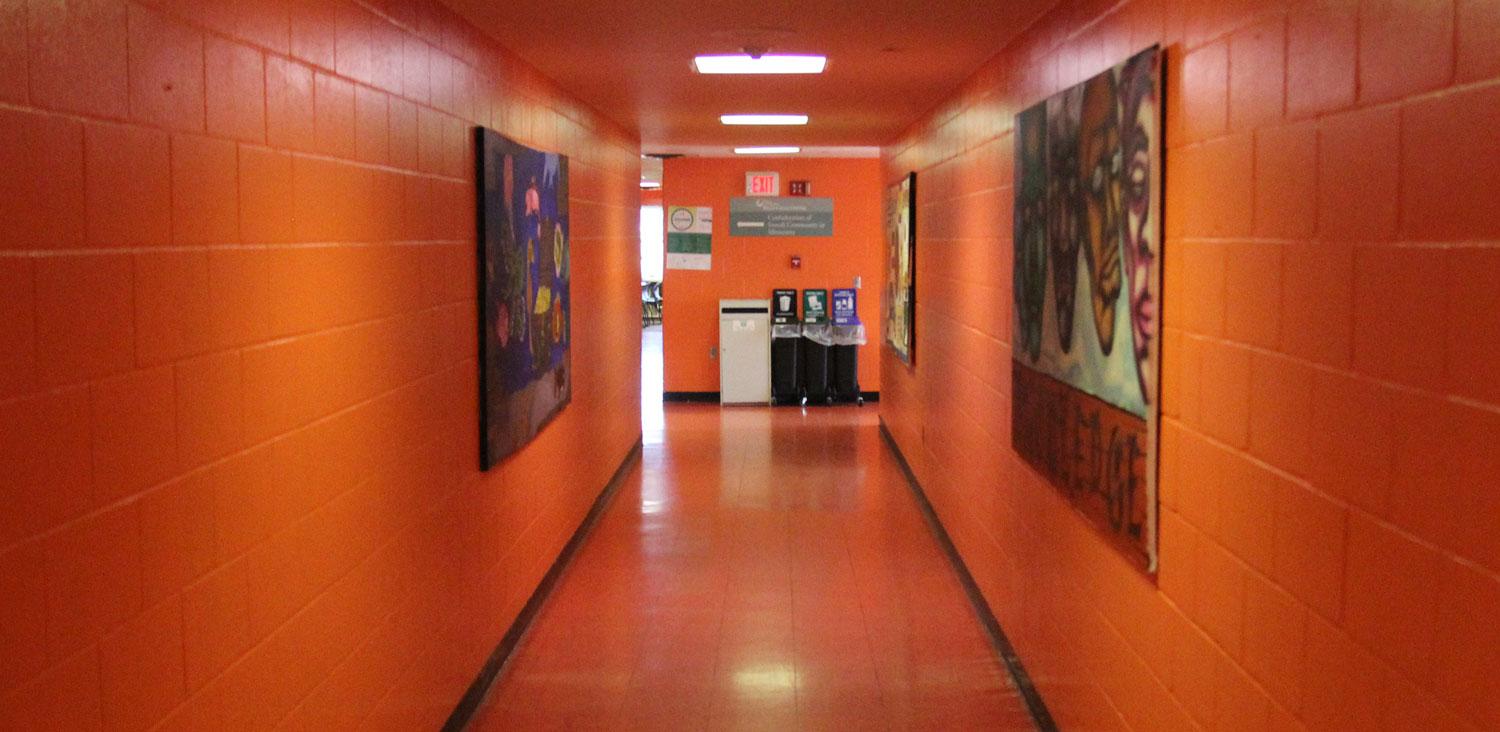
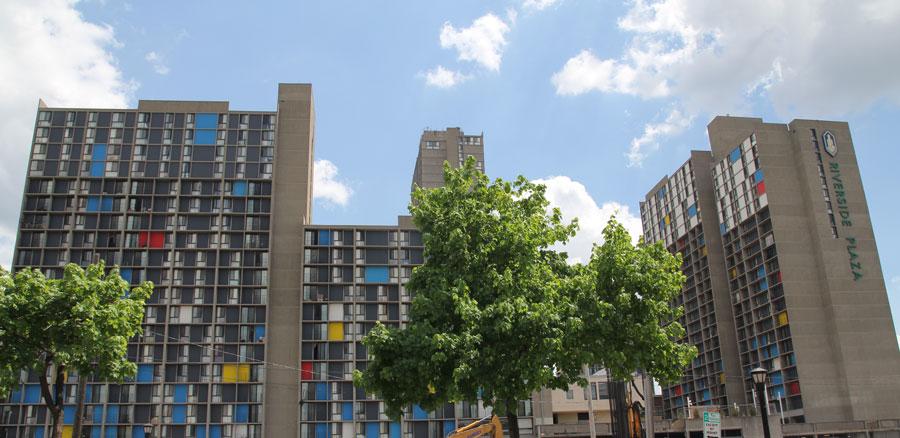
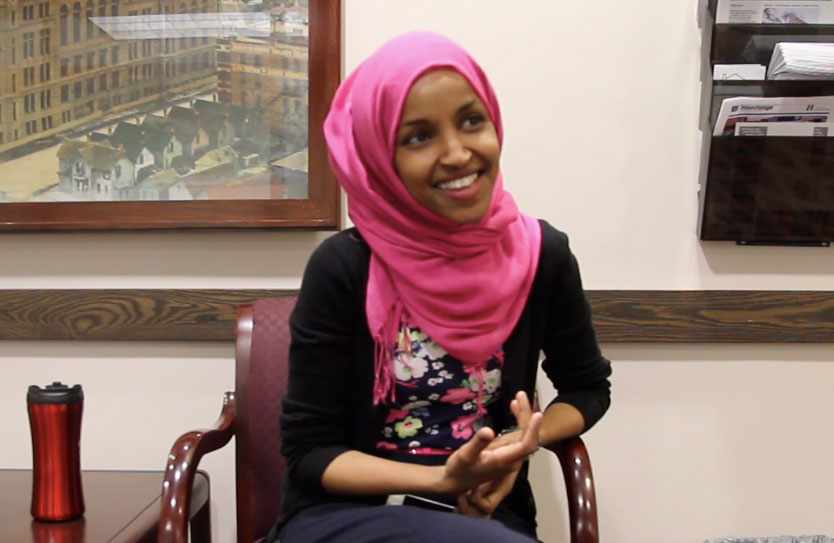
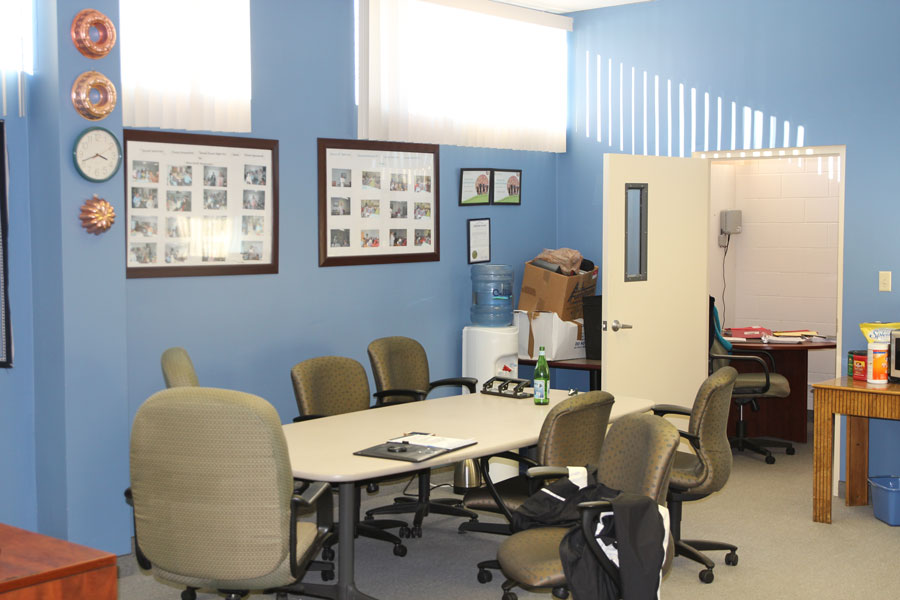
Keegan • Nov 4, 2014 at 12:46 pm
This is thought provoking & well researched.